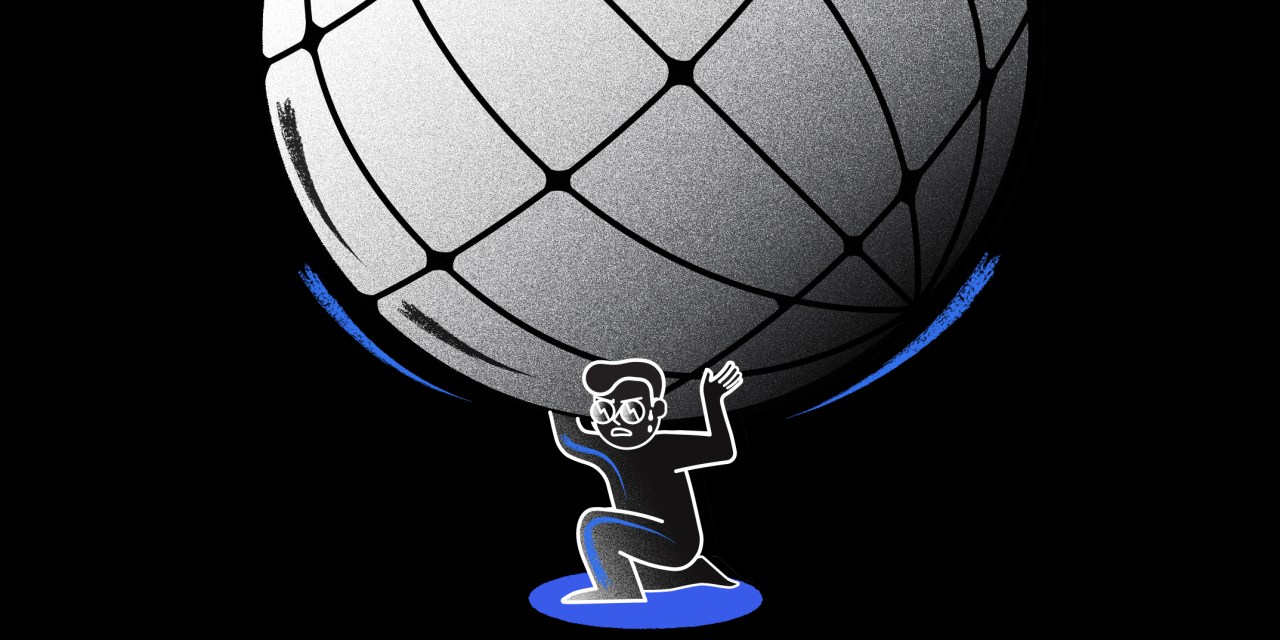‘Stretched thin’: Why some employers remain stubbornly slow to invest in mental health programs for staff

As the planet staggers into a third year of the Covid-19 pandemic, the mental health of employees continues to grow in workplace importance. Yet some employers remain stubbornly slow to take action and develop tactics that improve conditions.
One recent study by WTW, a global and publicly-traded consultancy, revealed that only 26% of employers have adopted a worker well-being strategy with objectives and goals. Less than half (48%) of the 322 employers interviewed had employee well-being programs at all.
These results contrast with the fact 86% of employers said that protecting their most valuable asset — their employees — from stress, burnout, and other mental health maladies are a top concern.
WTW’s senior director of health and benefits Regina Ihrke blames the pandemic and the day-to-day challenges accompanying the pandemic for diverting employers’ attention – arguing that business leaders “are just stretched thin.”
She’s hopeful the expanding Great Resignation will motivate many more to implement change and that such procedures could be a key “differentiator to attract and engage top talent.”
The study names four categories where companies intend to concentrate their efforts in the future: emotional, physical, social, and financial well-being. Ihrke emphasizes the need for employers to follow through. “The organizations that most effectively move the needle are those that develop a comprehensive strategy that supports all aspects of their employees’ well-being. It’s also important to articulate that strategy to employees, conduct manager training and measure effectiveness,” she said.
The World Health Organization has been tracking and studying mental health developments around the world. Presently, there is no global standard for protecting the mental health of workers, but that’s about to change. This year, WHO will release guidelines that have been two years in the making. The recommendations will cover workers at all income levels in a variety of work-settings, and are due out this summer.
The goal is to help divert a potential international mental-health crisis, compounded by the coronvairus pandemic and all the additional stresses it brought with it. “Close to one billion people have a mental disorder, with an estimated 5% of adults suffering from depression,” said Alison Brunier, communications officer for WHO. “And the lost productivity resulting from depression and anxiety, two of the most common mental disorders, is estimated to cost the global economy $1 trillion each year.” she added.
At the same time, investing in mental health solutions is a profitable way to spend money. WHO estimates that for every dollar put into beefed-up treatment for common mental disorders, there is a return of $4 in improved health and productivity, per person.
WHO identifies a bunch of work-related factors that affect employees’ mental health, such as inadequate health and safety policies. Brunier stressed that not addressing worker needs is more problematic during the rapid upheaval brought on by the pandemic. “The extent and pace of change can…when coupled with a working environment that doesn’t take account of people’s mental well-being, lead to physical and mental health problems, harmful use of alcohol or other substances, absenteeism and lost productivity,” she said.
Brunier identified other areas where danger lurks for the well-being of workers, including, “limited participation in decision-making, long or inflexible working hours and lack of team cohesion.” That’s alongside some of the most well-known causes of work-related stress and mental-health issues: violence, harassment and bullying.
“Workplaces are the ideal opportunity to ensure that people have access to the protection and support they need. Ensuring the good mental health of employees benefits workplaces and society as a whole,” Brunier added.
Having a supportive work culture is a tonic for worker well-being, whereas a toxic work environment is poison for the mind — and possibly the body.
Naturally, there are a good many businesses taking the well-being and mental health of employees extremely seriously.
Christal Bemont is one CEO who is following through on pledges made to improve. She has recruited experts trained in developing healthy minds to provide advice and guidance to her staff at Talend, a global data integrity company. “Employee well-being is a key culture element for us,” she said. “With the shift to remote working, it can be increasingly difficult to have healthy boundaries between our work and the rest of our life,” she added.
Her approach is to “create guidelines and set expectations to facilitate a healthy work-life balance, and thus reduce the likelihood of burnout.”
Bemont has shared her cellphone number with all the workers at Talend so they can contact her whenever problems arise. The company has also provided an annual wellness wallet for self-selected lifestyle and well-being needs, from wellness apps, fitness equipment, healthy meal memberships and more.
And for a much-deserved chance to reboot, Talend staff will get an added paid week off in August.
